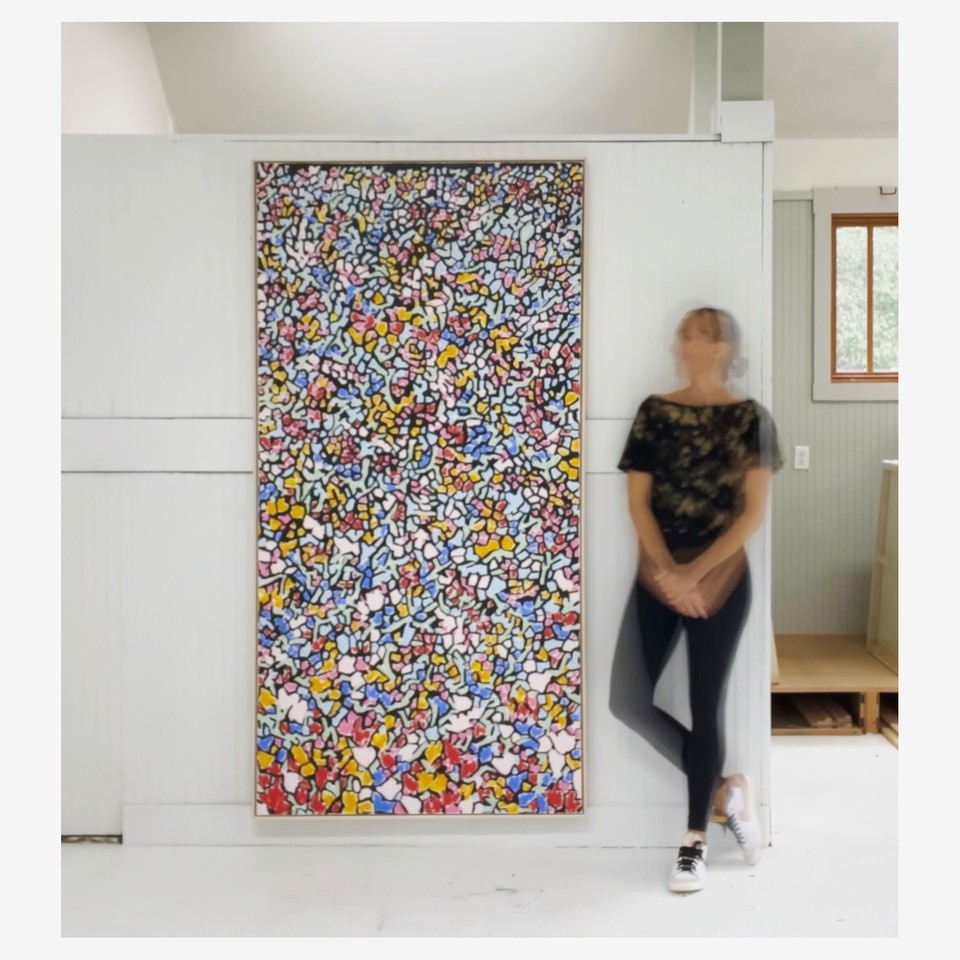We caught up with the brilliant and insightful Kit Porter a few weeks ago and have shared our conversation below.
Kit, thanks for joining us, excited to have you contributing your stories and insights. We’d love to hear about when you first realized that you wanted to pursue a creative path professionally.
I knew I wanted to be an artist as a child. It was always my biggest, wildest dream. Once I graduated from school with my fine arts degree, I truly did not know if there would ever be a possibility of being an artist professionally. I kept that dream in my pocket as I pursued a career in various sectors of the art world. I had the opportunity to direct a contemporary art gallery for several years and during this time I worked closely with artists who were so dedicated to their practice, and I was deeply inspired by them. I was also humbled into thinking I could never achieve the success of the caliber the artists I represented, and thought it would remain my place in the art world to support the artists around me, nurturing their careers. It was a job I loved so very much, but as I privately created my own work, I kept my wild dream within. After moving to a new city after spending a few years abroad, I came to a point in my life to start considering a new job. I knew I would be happy continuing a career in the arts, but wondered if perhaps there could be a place for my work. I made a decision to give myself a chance, and with fear and excitement began to put my work into the world. I knew this was something I could not do alone, and slowly started nurturing relationships with people who were interested in supporting my work. Although I spend many solitary hours in the studio daily, my work is NOTHING without the people surrounding me.





As always, we appreciate you sharing your insights and we’ve got a few more questions for you, but before we get to all of that can you take a minute to introduce yourself and give our readers some of your back background and context?
I am an artist living and working in the United States, in Beaufort, South Carolina. My current body of work is conceptually based in how our physical and interpersonal environment alters and shapes our life experience. Thin washes of vibrant hues are used to create shapes reminiscent of flowers and foliage that combine together to make up fields bursting with life and energy, giving the viewer a sensory experience of abundance. However, rather than overlapping and growing in a tangle of layers, fields are broken down into individual shapes that resemble broken fragments more than blossoming flowers, alluding to the delicacy and fragility of the physical world. Opaque paint flows between and surrounds each floral and leaf form, not only suspending the form in space, but altering the edges to create a fragment that appears to be shaped by the space around it. Subject becomes secondary to process, and fragment speaks louder than flower, as the handling of the paint communicates how our surroundings undeniably shape our life experience.
What do you think is the goal or mission that drives your creative journey?
JOY





Can you share a story from your journey that illustrates your resilience?
This is less of a story of “one time” I had to be resilient, and rather a mindset I have developed for sustained resilience. As I mentioned earlier, I used to direct an art gallery where we would receive submissions from artists daily. reviewing hundreds of portfolios and websites, and made it a point to take the time to respond to each. While so much of the work was absolutely incredible, there could be a number of reasons why the work would not be suitable for the gallery “at that time”. An artist could choose to receive a response as a rejection, or they could consider resubmitting at a later date with different work.
The notion that a rejection can be seen as circumstantial is something that I continue to keep in mind when I am personally submitting my work to galleries, juried exhibitions, media opportunities, etc. A “no” is not a “never” in my book. A “no” is just a “not at this time” – which ultimately means “given the right circumstances, MAYBE one day.” I receive rejection letters all of the time, but I have learned not to take them personally, understanding that it is about meeting a very specific need, with perfect timing, at just the right moment. Most importantly, I believe a “no” can be an opportunity. Some of my greatest working relationships have started off as a “no” which turned into a conversation, then into a relationship, and when the time was right, into an opportunity.
Contact Info:
- Website: www.kitporterstudios.com
- Instagram: @kitporterstudios
- Facebook: www.facebook.com/kitporterstudios/
Image Credits
Kit Porter Uprise Art


